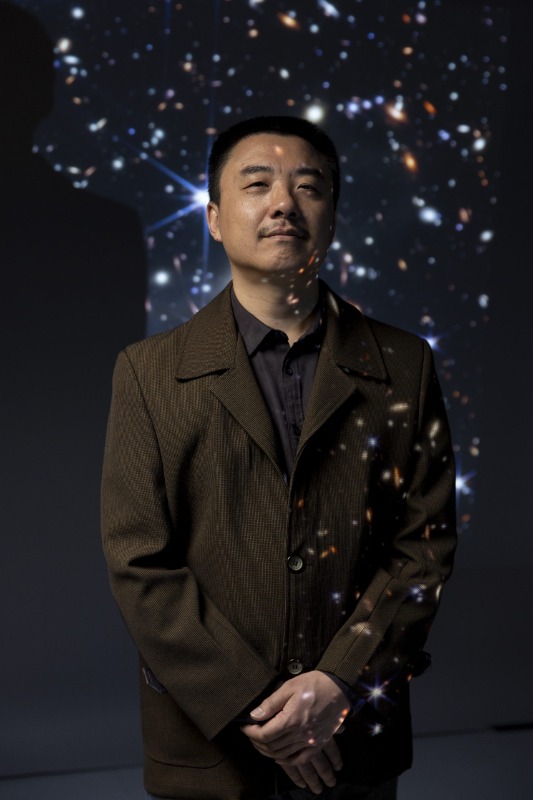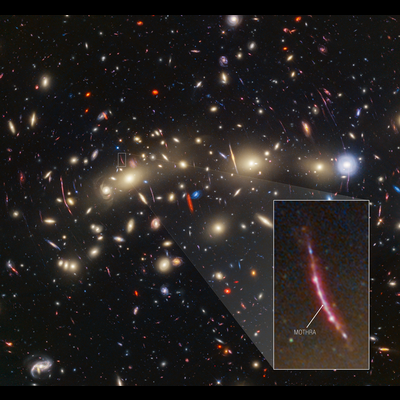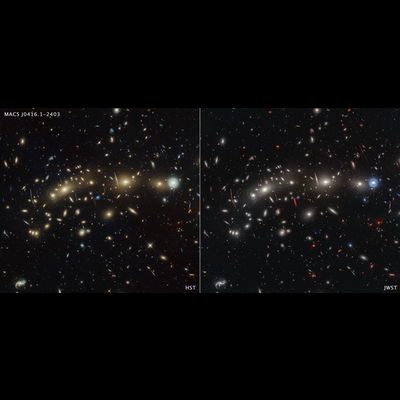
[ad_1]

A staff of worldwide scientists, led by the College of Missouri’s Dr. Haojing Yan, used NASA’s James Webb Area Telescope (JWST) to uncover 14 new transient objects inside the Christmas Tree Galaxy Cluster, 4.3 billion mild years away. These transients, which seem as flickering lights in house, had been acknowledged by way of a time-lapse research of galaxy cluster MACS0416. Two of the found transients are supernovae, permitting the staff to discover their host galaxies. Innovation & Tech Right now spoke with Dr. Haojing Yan about this groundbreaking discovery and the way revolutionary tech redefines house exploration.
Innovation & Tech Right now: How is the James Webb Area Telescope (JWST) completely different from different telescopes? How did the tech assist you uncover the transient objects within the Christmas Tree Galaxy Cluster?
Dr. Haojing Yan: To elucidate the expertise half, it’s finest to do a comparability to 2 of NASA’s different house telescopes, the Hubble Area Telescope (HST), which remains to be functioning, and the Spitzer Area Telescope (Spitzer), which ceased operation in 2020. HST works within the ultraviolet to near-infrared and is simply 2.4-meter in diameter. Spitzer labored from near-infrared to far-infrared however is simply 0.85-meter in diameter. JWST principally works in near-infrared to mid-infrared and is 6.5-meter in diameter. JWST is rather more delicate and has significantly better spatial decision than both of the opposite house telescopes talked about as a result of it has a a lot bigger mirror. The unprecedented sensitivity and spatial decision of JWST in infrared enabled our discovery.
I&T Right now: What motivated your staff to review the MACS0416 galaxy cluster, and why is it known as the Christmas Tree Galaxy Cluster?


Yan: Within the earlier research utilizing the Hubble Area Telescope, astronomers discovered a couple of transients on this cluster. The conclusion was that these transients are particular person stars in background galaxies (e.g., rather more distant than the cluster itself). They had been quickly amplified an enormous quantity as a result of gravitational lensing of the cluster in order that they had been seen to HST for a brief length of time (e.g., “transients”). Detecting a person star in far-away galaxies is an enormous deal. With out gravitational lensing, we might by no means have the ability to obtain such a objective. Our staff’s program, dubbed “Prime Extragalactic Areas for Reionization and Lensing Science” (PEARLS), led by PI Prof. Rogier Windhorst at Arizona State College, selected to sort out this problem. We nicknamed MACS0416 as such as a result of it’s so colourful, and the transients are just like the twinkling lights one would placed on a Christmas tree.
I&T Right now: How do transient objects akin to supernovae assist us perceive the universe? What can we study from learning them?
Yan: The 14 transients in our research fall into two completely different classes: 12 of them are non permanent, extremely-highly-amplified stars in far-away galaxies, that are stars which can be intact; the opposite two are supernovae (additionally positioned in distant galaxies), that are lifeless, exploding stars — therefore rising their brightness by greater than a billion occasions. Merely put, learning the 12 stars can assist us find out how the stellar constituents of far-away galaxies may very well be completely different from (or the identical as) our galaxy and research the darkish matter content material of the lensing cluster (MACS0416) in an in depth means that was by no means achievable earlier than. Finding out the supernovae will assist us check our cosmological mannequin and perceive the character of darkish power. What we’ve been capable of uncover right here is simply the tip of the iceberg, and JWST has opened an entire new window of learning transients that may have a profound influence on scientific analysis.


I&T Right now: What challenges or difficulties did your staff encounter in the course of the analysis?
Yan: The largest problem was to validate our findings and we did so by utilizing extraordinarily cautious evaluation. My graduate pupil, Bangzheng Solar, contributed lots to this effort.
I&T Right now: How may the present and future tech developments in house telescopes influence future astronomical analysis and discoveries?
Yan: For my part, JWST is revolutionizing astronomy. It has given us so many surprises already.
I&T Right now: Are there particular plans or hopes for using the JWST in future analysis tasks?
Yan: A variety of our staff members have not too long ago put in proposals for consideration which can be geared toward learning completely different elements of the universe utilizing JWST.
I&T Right now: Contemplating the evolving nature of house tech and astronomy, how do you see upcoming tech developments influencing our understanding of the universe?
Yan: Trying on the improvement of observational astronomy from a special angle, we may additionally profit enormously from a bigger house telescope working at UV-to-visible wavelength.
[ad_2]
Supply hyperlink




